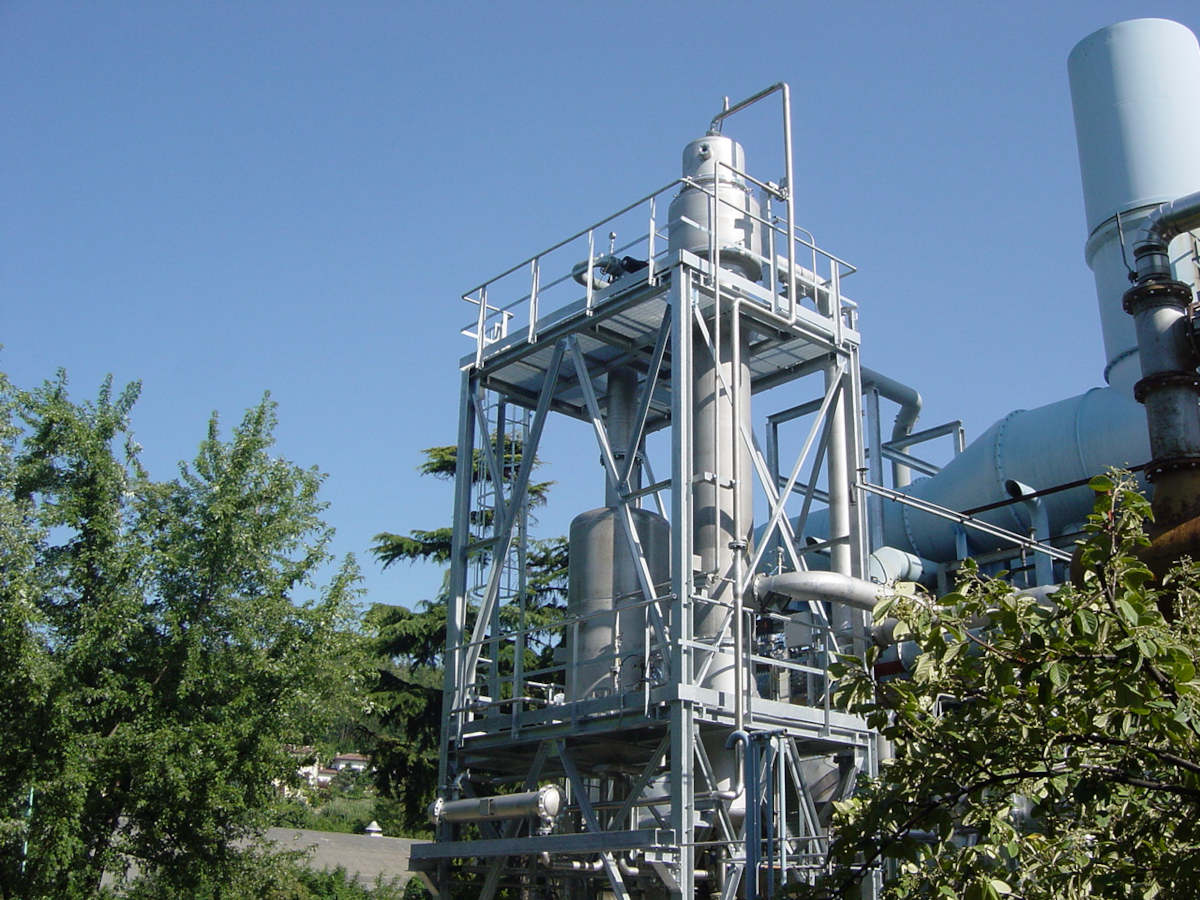SECTOR
THE NEVERENDING QUEST TO MAXIMIZE ENERGETIC EFFICIENCY, ALSO APPLIED TO THE DEPURATION PROCESSES OF EMISSIONS CONTAINING V.O.C.s, HAS LEAD TO THE IDENTIFICATION OF A TECHNOLOGY THAT ALLOWS A 30% REDUCTION OF THE QUANTITY OF STEAM USED IN SOLVENT RECOVERY PLANTS.

FUNCTIONING AND ENERGETIC IMPACT OF ACTIVATED CARBON SOLVENT RECOVERY PROCESSES
Activated carbon solvent recovery plants block the solvents contained in the atmospheric emissions by means of adsorption on activated carbons.
To allow the following recovery, solvents are then removed from the activated carbon by means of a hot liquid that, in case of solvents that aren’t water-soluble (e.g. toluene, hexane, benzene), will be steam.
The hot fluid and the solvent removed in gas form from the activated carbon are then condensed, cooled and separated by gravity.
This process’ main consumption is the use of steam that shall then be condensed.
The solvent is then recovered in the production process, while condensed water can be reused to once again produce steam.
ENERGY AND ENVIRONMENTAL EFFICIENCY GOALS
In this case, the goal is to optimize the solvent recovery process both from a quantitative and efficiency point of view, thus reducing the energy needed, optimizing the used resources and minimizing waste.
THE SOLUTION BY MEANS OF ENERGY RECOVERY PROCESS
How to save energy in industry? The quantity of steam used in each activated carbon regeneration can be reduced using the latent heat in the solvent-steam mix (desorbate) exiting the adsorber during regeneration. In the first few minutes the steam fully condensates, since all the heat is used to heat the adsorber and the carbon. Afterwards the steam – only acting as a means of transport – is still available as steam coming from the adsorber.
A slight vacuum degree produced by a thermocompressor (fed with cold 8-9 bar steam) and the heat supplied by the desorbate, allow steam production when the previously-accumulated condensate re-evaporates.
The produced steam, mixed with the fresh steam feeding the thermocompressor, represents the steam flowrate necessary for the activated carbon regeneration.
In this way, supplying an average of 0,7 kg of fresh steam at 8 bars generated with conventional boilers we can produce 1 kg of vacuum-sealed recovered steam (97°C), for a total of 1,7 kg of steam suitable for the regeneration (the quantity of fresh steam used in this phase is therefore just 41% of the one required by a traditional system).
Since energy recovery is impossible during the first regeneration phase, which lasts a third of the total regeneration time, the total steam consumption reduction will be 30% of the total consumption on average.
THE RESULTS
- >30% steam consumption reduction, with a consequent reduction in CO2 emission
- Possibility to obtain energy efficiency titles
- Better environmental conditions: lower consumption of the cooling water necessary for solvent condensation and less condensate to be treated
- Reduction of the consumption of boilers feeding water and relevant reagents required for its pre-treatment
- Reduction of energy consumption due to a smaller thermal load to the evaporating tower: reduction of electric consumption both to guarantee cooling water flowrate circulation and for the tower fans
SYSTEM ADVANTAGES
The system can be adapted to any existing plant.